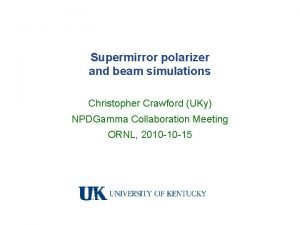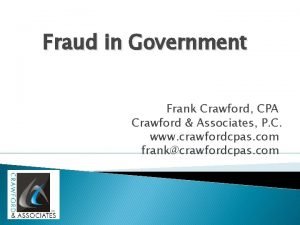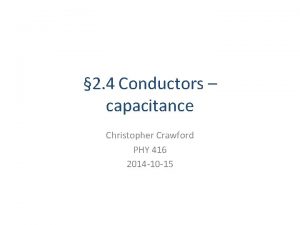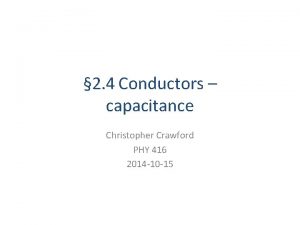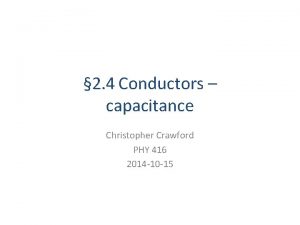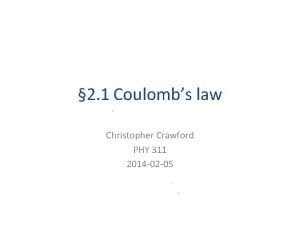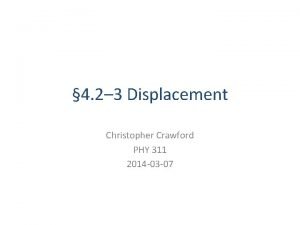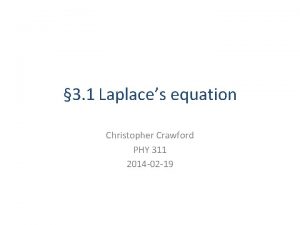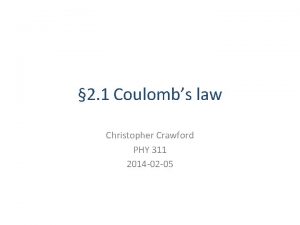2 4 Conductors capacitance Christopher Crawford PHY 311








- Slides: 8

§ 2. 4 Conductors – capacitance Christopher Crawford PHY 311 2014 -02 -14

Outline • Exam on Monday question types, review sheet • Conductors vs. dielectrics Charge, field, and potential Induced charge Electrostatic presure • Capactitors Field lines, equipotentials Capacitance = flux / flow Energy = flux x flow 2

Exam – 4 questions • Calculate vector derivatives – Curvilinear coordinates • Integrate electric field or potential over a charge distribution – Parametrize surface, path or volume – Differentiate between r, r’, r_script – Split integrals and factor out x, y, z • Proof of relationships between five formulations of electrostatics – See study sheet • Essay question – prose and diagrams – Relation between field, flux/flow, sources, especially applied to electrostatics – Geometric interpretation of laws 3

Plotting field lines and equipotentials 4

Conductors vs. dielectrics • Conductor – Free vs. bound charge i. metal: conduction band electrons, ~ 1 / atom ii. electrolyte: positive & negative ions • Electrical properties of conductors – Field, potential, charge distribution – Coefficients of potential, capacitance

Induced charges • Induction in a conductor – displacement of charge – – – Charge shifts until electric field is normal to surface Surface charge terminates electric flux lines inside the conductor Total charge remains constant unless there is an escape path Faraday cage – shields external flux inside a hollow conductor field lines from charge inside a hollow conductor are “communicated” outside the conductor by induction (compare: displacement field, 7. 3) 6

Electrostatic pressure • Force due to electric field on induced charge in conductor – Force per unit area: f = P (or electrostatic pressure) 7

Capacitor • Pair of conductors held at different potential – Electric flux: – Electric flow: • Capacitance: Q = C ΔV – Parallels later in the course: • resistance, reluctance, inductance • Stored energy: E = ½ Q ΔV 8

